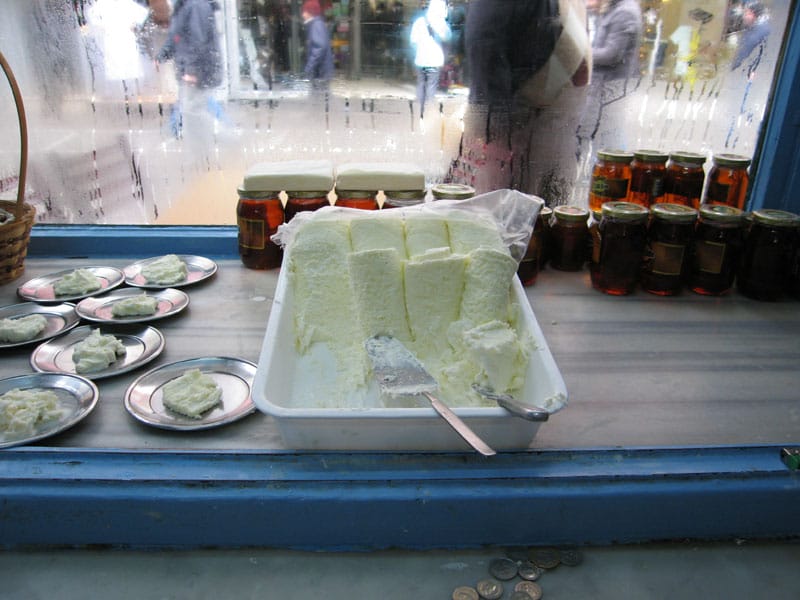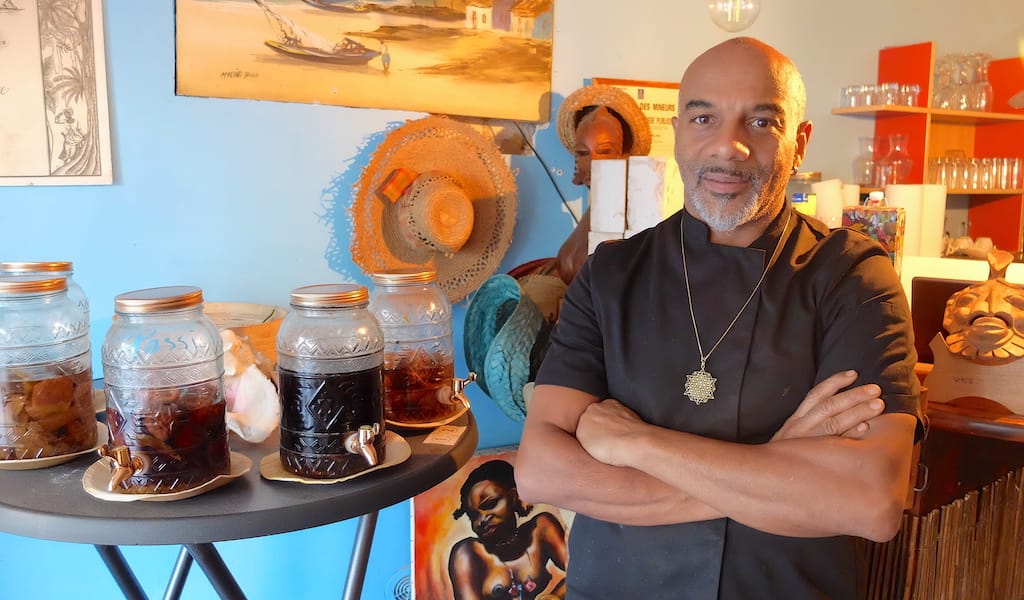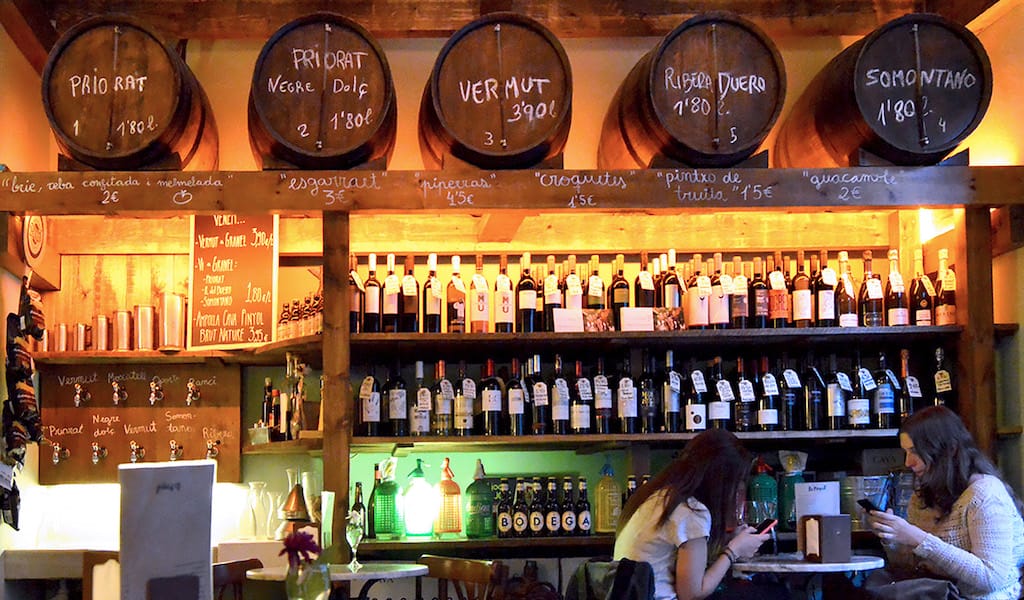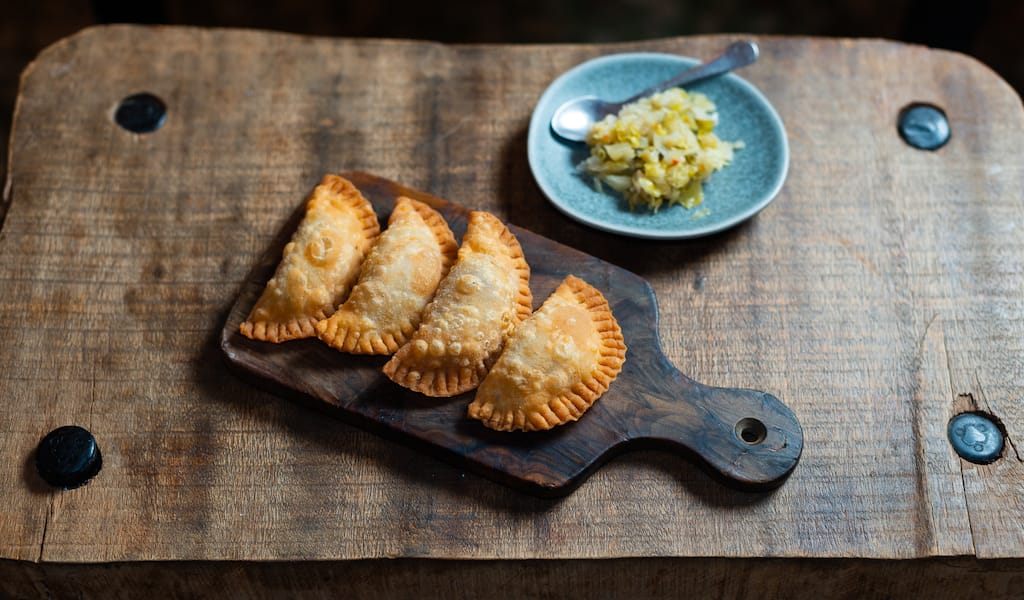Editor’s note: We are profoundly sad to report that Beşiktaş Kaymakçı has closed.
In our imagination, kaymak – the delicious Turkish version of clotted cream – is the only food served in heaven, where angels in white robes dish out plate after plate of the cloudlike stuff to the dearly departed, who no longer have to worry about cholesterol counts and visits to the cardiologist.
Perhaps we’re getting carried away, but kaymak can do that to you. For our money, the classic Turkish combo of kaymak served with honey and crusty white bread is one of the finest breakfasts anywhere.
The stuff is glorious, but simple. Milk – preferably from domesticated water buffaloes, known as “manda” in Turkish – is slowly boiled until a thick layer of very rich, pure, white cream forms at the top. After it cools, the kaymak is rolled up into little logs that have a consistency that hovers somewhere in between liquid and solid, with a creamy taste that’s both subtle and rich at the same time.
The stuff is also quite delicate, with a shelf life of barely one day. Still, purists refuse to refrigerate it, lest it lose its texture and pick up any refrigerator odors. Like we said, kaymak can make people get carried away.
Two of our favorite places to try kaymak are:
Beşiktaş Kaymakçı – This tiny shop/eatery has been in business since 1895, and it certainly shows its age. The marble counter is cracked and the paint on the walls peeling. But the kaymak, served up by the 84-year-old Pando, a living institution in Istanbul’s untouristed Beşiktaş bazaar, is out of this world. Prices here also seem unchanged since 1895: a plate of kaymak and honey, served with fresh bread and a glass of steaming hot milk, will set you back 4 lira.
Karaköy Özsüt – Compared to Pando in Beşiktaş, this place – open since 1915 – is a relative newcomer to the kaymak scene. Located on Istiklal Caddesi, Özsüt also serves up very good kaymak (as well as yogurt and rustic cheeses) made from the restaurant’s own herd of water buffaloes, whose pictures grace the walls.
 February 7, 2022 Kaz Kreol
February 7, 2022 Kaz Kreol
If Noailles is known as the “belly of Marseille” for its fragrant food stalls, street […] Posted in Marseille April 23, 2015 Lo Pinyol
April 23, 2015 Lo Pinyol
Editor's Note: Sadly, this spot closed in late 2022.
Bars and literature are like […] Posted in Barcelona October 13, 2022 Recipe: Pastéis de Massa Tenra, Portuguese Hand Pies
October 13, 2022 Recipe: Pastéis de Massa Tenra, Portuguese Hand Pies
“For me, it’s a grandma’s dish,” says Miguel Peres, without hesitation, when asked about […] Posted in Lisbon
Published on May 20, 2014
Related stories
February 7, 2022
MarseilleIf Noailles is known as the “belly of Marseille” for its fragrant food stalls, street food and markets, its neighbor Cours Julien is where locals fill their bellies sitting down. The street-art-splashed buildings house a smorgasbord of restaurants from every corner of the world, including the Ivory Coast, India, Palestine and Peru. Those on the…
April 23, 2015
BarcelonaEditor's Note: Sadly, this spot closed in late 2022. Bars and literature are like bees and flowers: two separate worlds linked to each other through a symbiotic relationship that benefits both. Writers and characters have been the natural inhabitants of taverns and pubs in Dublin and London, bohemian cafés in France, Vienna and Madrid, and,…
October 13, 2022
Lisbon“For me, it’s a grandma’s dish,” says Miguel Peres, without hesitation, when asked about his relationship with pastéis de massa tenra, a Lisbon specialty of deep-fried, palm-sized pastries filled with meat. “She would make a lot of them and freeze them, so we would always have them around. When there was a birthday or party,…
















































































